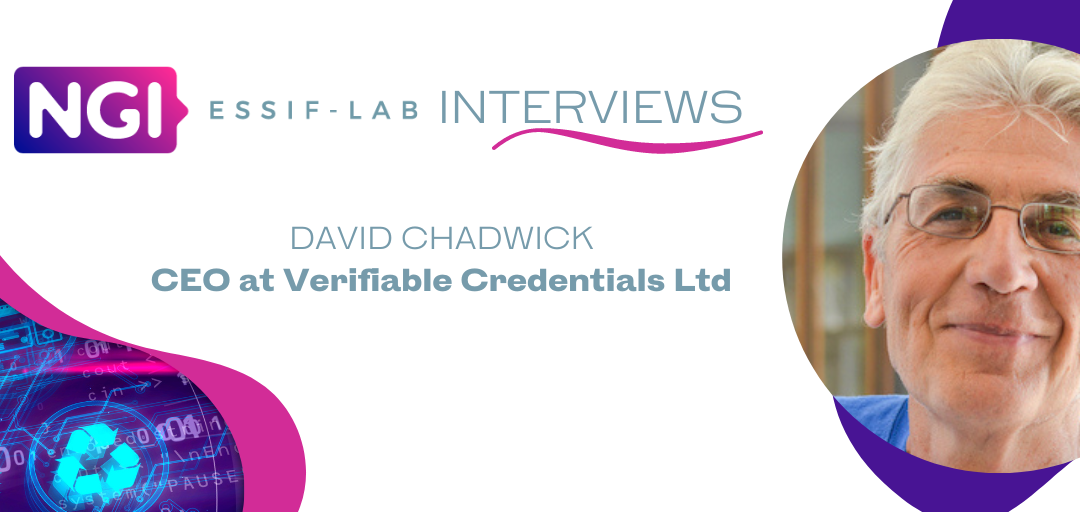Finding a way to easily implement verifiable credentials? 🧐
Verifiable Credentials Ltd has 20 years of university research experience that users the most standards conformant, easiest to implement, fully secure, and privacy-protecting verifiable credentials eco-system from a co-author of the W3C Recommendation.
We have had the pleasure to interview David Chadwick, CEO at Verifiable Credentials and renowned expert on SSI, which will explain to you the beginning of this idea and which are their goals in the future.
1. Introduce yourself and your company, and what services or products you offer.
Verifiable Credentials Ltd (VCL) was a spin out company from the University of Kent, led by David Chadwick, Professor of Information Systems Security. The objective of VCL was to commercialise Professor Chadwick’s 20+ years of research into identity management that started with X.500/X.509 in the 1990s, and culminated in a proof of concept Verifiable Credentials prototype at about the same time that the W3C Verifiable Credentials Data Model Recommendation was first published. VCL applied to the first business-oriented eSSIF-lab call in order to build a user friendly controlled natural language (CNL) GUI for creating the policies that verifiers will need to specify for requesting verifiable credentials from users 1. The GUI allows users to specify their policies in either conjunctive normal form or disjunctive normal form, in the controlled natural language of their choice. English, German, French and Portuguese variants were produced during the eSSIF project. The CNL is then translated into VCL’s JSON-based policy language 2 and stored in an open-source Policy Server, allowing many different wallets and verifiers to share the same policy.
2. What have you achieved with your idea thanks to eSSIF_Lab project?
One of the unexpected outcomes of participating in eSSIF-lab, was that VCL was introduced to the TRAIN project being run by Fraunhofer. TRAIN allows verifiable credential ecosystems to provide scalable trust in issuers. This functionality was already in Professor Chadwick’s roadmap for VCL, so it was opportune to work with Fraunhofer and to integrate TRAIN into VCL’s prototype.
Shortly after the eSSIF project was completed in 2021, Crossword Cybersecurity PLC (CCP), a UK SME listed on the London AIM stock market, acquired VCL, in order to strengthen VCL’s development and marketing teams. CCP now licenses the Identiproof product, which is a fully standard conformant implementation of the W3C VC Data Model.
Identiproof comprises a VC issuer, a wallet for both Android and iOS, and a VC Verifier, along with background services such as a policy server and audit server. CCP is currently leading the NGI Atlantic project “Next Generation SSI Standards” which is implementing the OpenID for Verifiable Credentials (OID4VCs) protocol suite. Partners in this project are Spruce Inc from the USA and Fraunhofer from Germany. Interworking tests between Spruce’s (or CCP’s) wallet and CCP’s (or Spruce’s) issuer and verifier are currently taking place, Under this project TRAIN has been extended by Fraunhofer to support scalable trust in both verifiers and wallet software providers, as well as in issuers. A protocol enhancement to OIDC4VCs has been specified in order for TRAIN to be tested between the USA and Europe.
3. What are your goals for the middle/long-time future?
CCPs short to medium-term goals are to fully integrate the OIDC4VCs protocol suite and enhanced TRAIN infrastructure into Identiproof, and to add a web-based wallet to Identiproof to complement its existing iOS and Android offerings. Since the education market is one of CCP’s identified markets for verifiable credentials, CCP’s short-term goal is to successfully participate in the JFF Plugfests in order to show that Identiproof is a standards conformant product that can interwork with a whole range of different verifiable credential products from different providers across the globe.
4. Any piece of advice for those who are looking for public funding?
CCP’s advice to others who are looking for public funding is to keep one step ahead of the crowd in your R&D work, so that when calls for proposals are issued you already have a very good idea and well worked-out plan of what you want to develop. Ideally, you may already have a proof of concept in your lab.

